
By Cree M.J.
The Phionic Series
Phionic Intonation and the Phionic series is a natural convergence of the golden ratio and the layout of modern 12 tone temperament. It is a chart of Phi relationships that can be used as the basis for a mathematically aligned tonal tuning system that can satisfy our current concepts of musical harmony and intervals.




A Phi Derivative Poly-scale, Microtonal system of intonation.
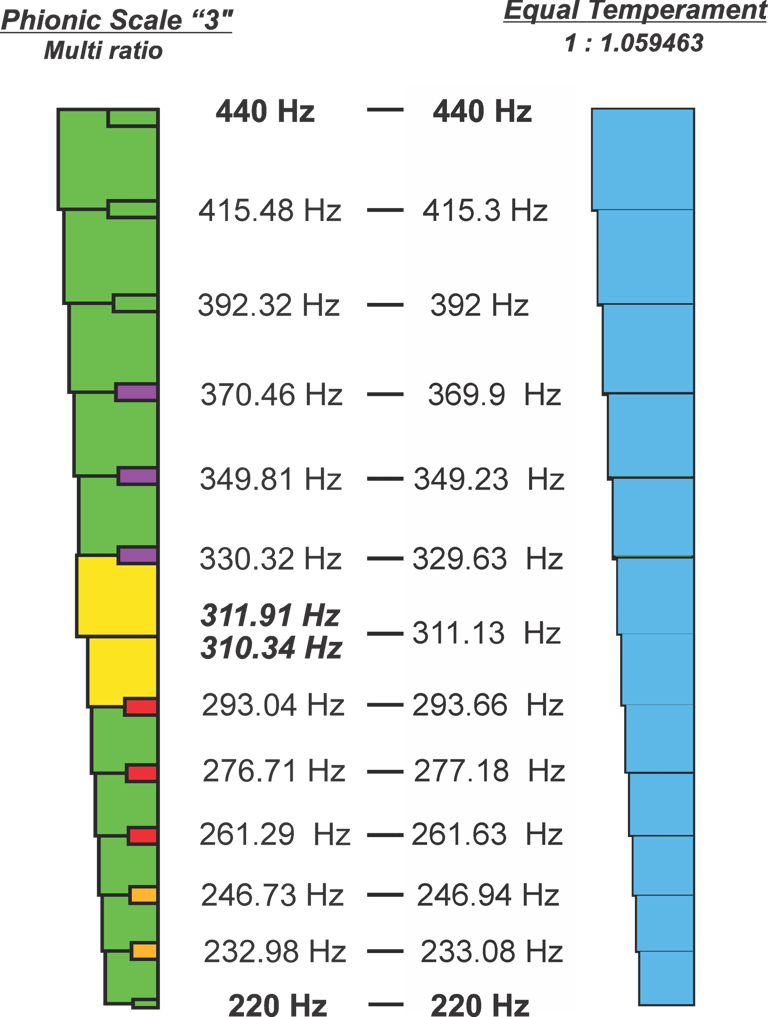

The Phionic scales, in comparison to western 12 tone equal temperament, is extremely similar as equivalent intervals will only differ by a small amount and will not be harmonically unfamiliar. Current music theory will remain applicable, though may need to be adjusted accordingly.
Unlike Equal Temperaments uniform ratios, The Phionic scales are comprised of two different ratios. One ratio is slightly smaller that equal temperaments 1 : 1.059463, at
approximately 1 : 1.0591. The Other ratio which is highlighted is approximately 1 : 1.155 and is called the Bridge interval.


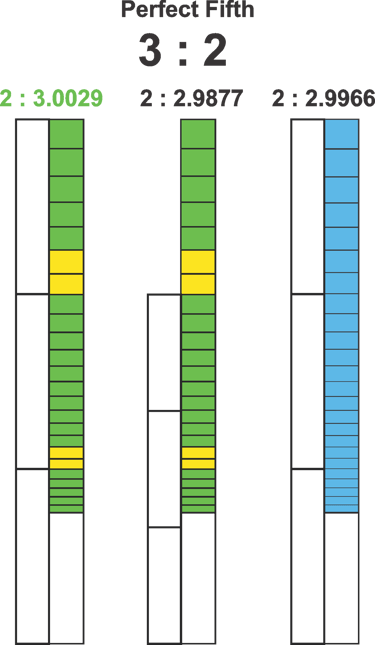

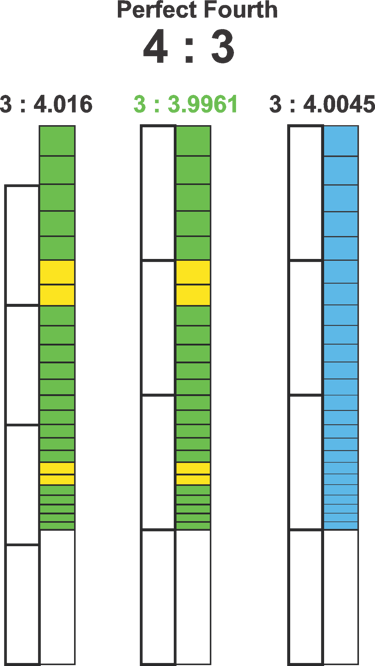

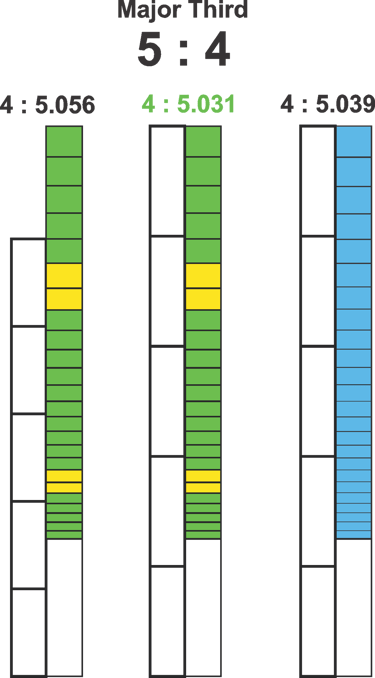

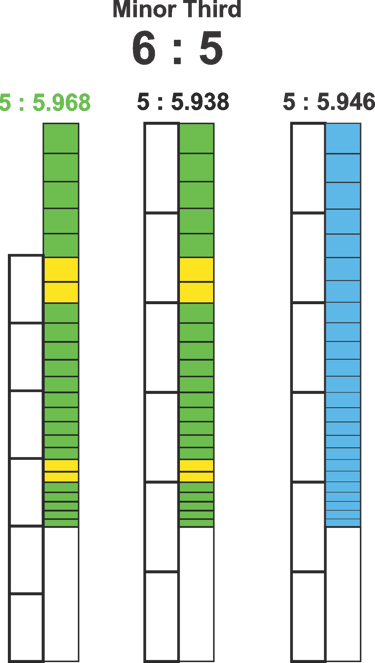

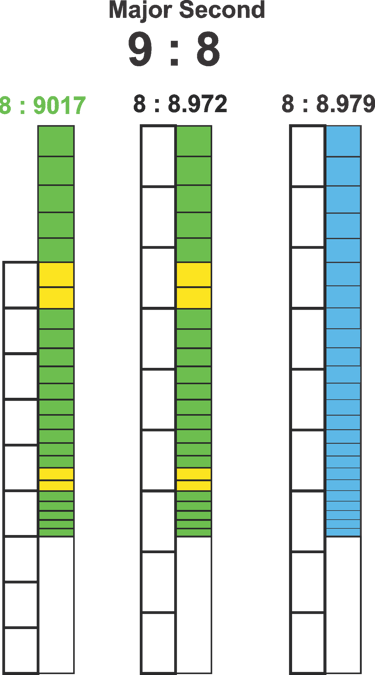

We can interpret the Phionic intervals as having a lot of potential character musically as certain intervals drop slightly more out and slightly more into tune when compared to equal temperament. One could imagine using this creatively, as well as selecting one of the five different Phionic scales as a base would alter the tonal palette of a song, or too optimise the intervals for any given musical key or scale of notes.
The very interesting structure of the Phionic series is covered on the pages "Phionic Geometry", but basically there are cycles of Phi (The Golden Ratio) and this translates into 5 different scales per "Phi-Cycle", and an infinite series of these cycles either side. The position of the "Bridge" interval varies between the scales of one Phi-cycle and we can observe how in one Phi-Cycle, this bridge makes a full sweep of the octave , and relative to the static ratios of Equal Temperament, the Phionic ratios appear to undulate like a wave.
Exactly how one might utilise the scales is up to interpretation and imagination. The regions in yellow designate potential positions for the bridge, and we can decide on either choosing just one for a 12 tone structure, or including all of the bridge positions available for up to 14 notes as a method of a transient bridge interval that can either be crossed or not depending on what is desired. We can also decide to utilise multiple scales at once, but we will discuss this on the next page as it is a broad topic. Choosing a bridge position within the proper regions wont affect the values of the surrounding intervals because it is "baked" into the structure of any given scale.
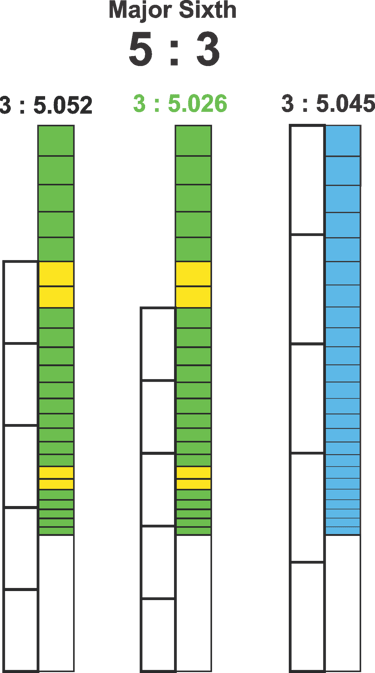

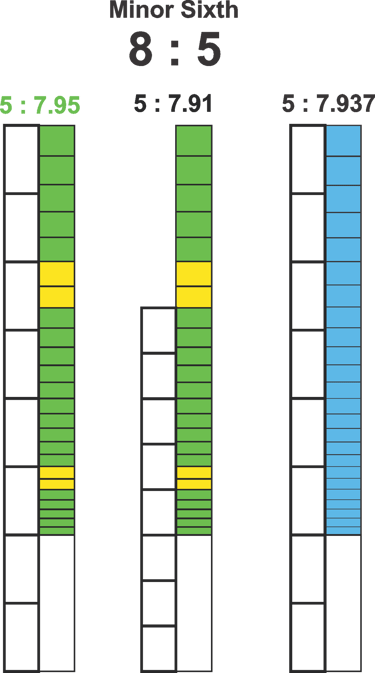


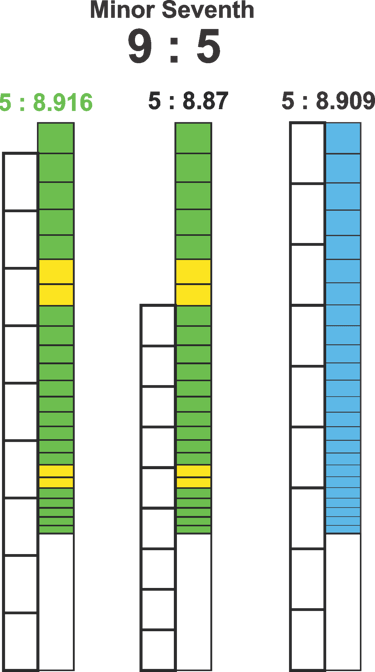
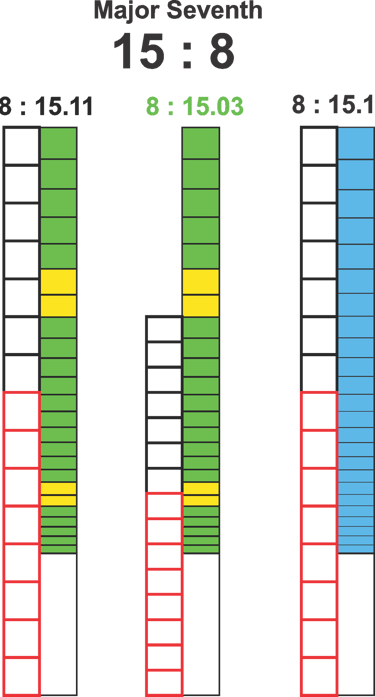

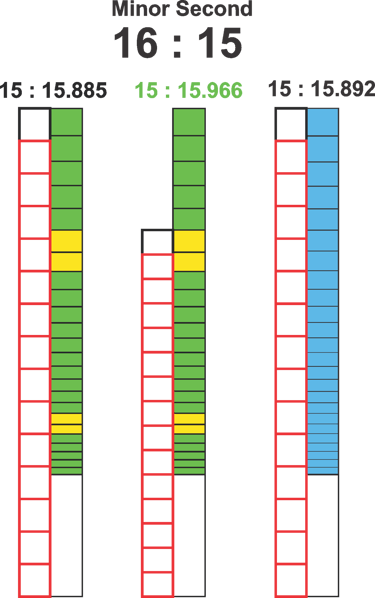

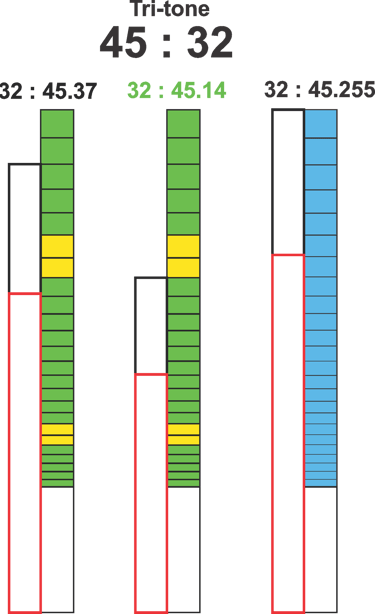

Below is a chart of values that you may use to experiment for yourself with the ratios of the Phionic series, the middle scale has been chosen as the balance point from which to base the frequencies. Some key points to using the ratios or creating your own chart is to remember that the Phionic scales 1 - 4 and 2 - 5 are identical in value, only the apparent position of the fundamental octave has shifted. You can use the 1 : 1.102141 / 1 : 0.90732 ratio to identify the value of the octaves of the scales or 1 : 1.6262374 too extend into other "Phi-Cycles", which follow the same pattern, as before scale 1 you get scale 5, or after scale 5 you get scale 1. The base octave values are in bold on the top and bottom of the chart, you can simply double or half the values to map out other octaves.
The other values in bold represent the position of the bridge interval, for a 12 note scale the
3rd Phionic scale is simple enough, you simply choose one of the bold values. For the other
scales with 4 values in bold i would suggest that either you choose both of the lower, both of
the higher or the higher, larger value and the lower, smaller value. We can see that the 4
values represent slight variations of two general values, if we choose the lower, larger value
and higher, smaller value we will create a 3rd squashed interval ratio and two bridges.
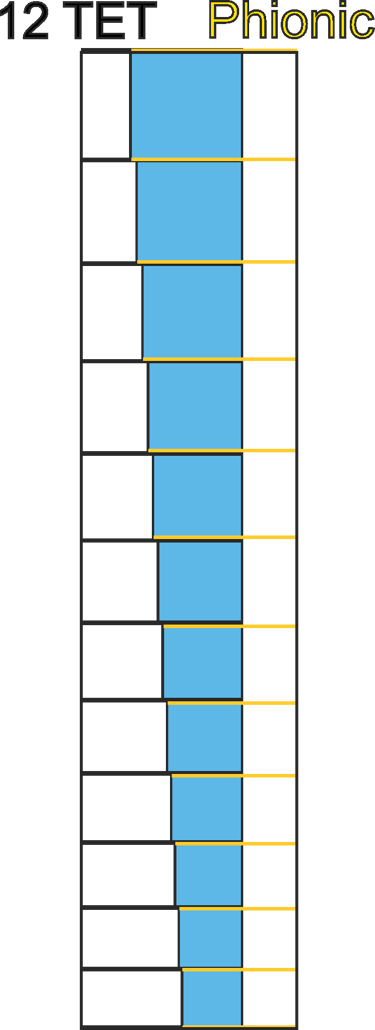

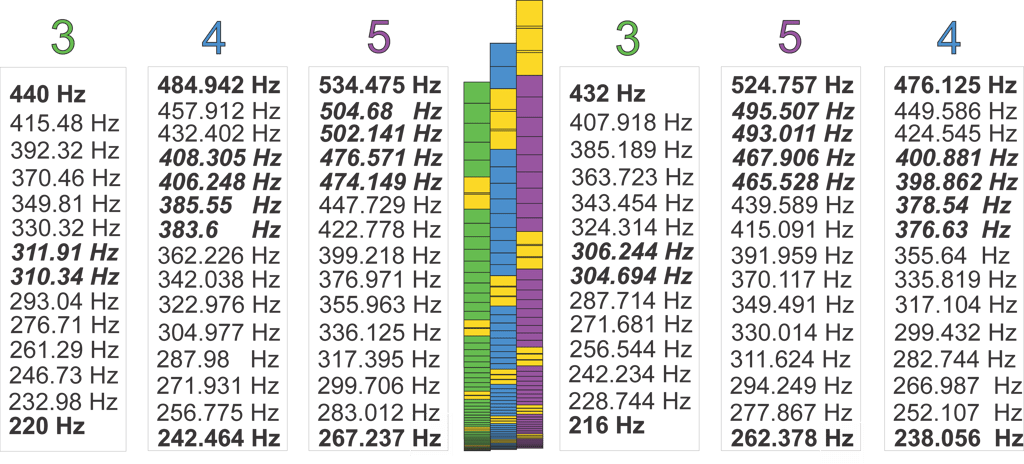



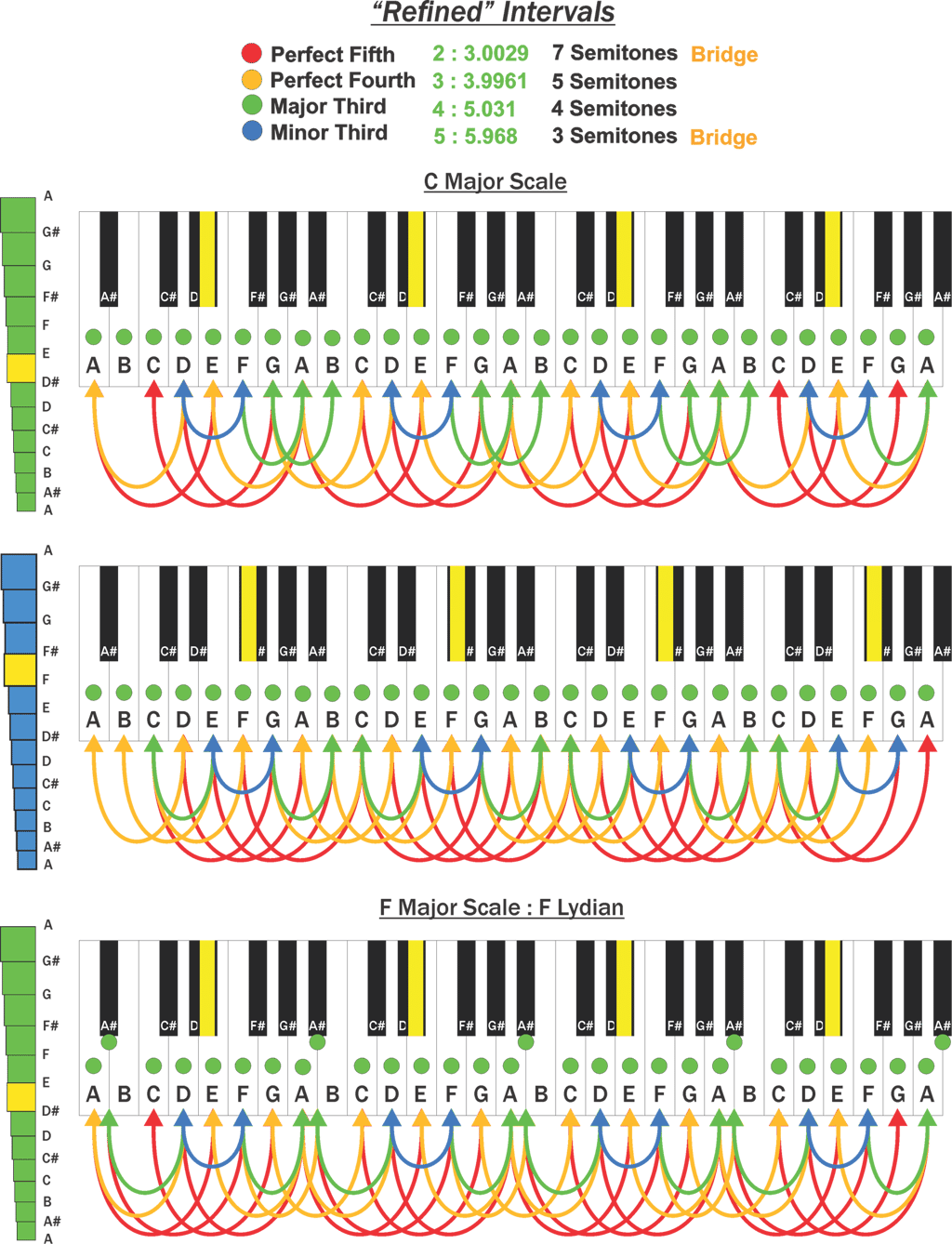

From the diagrams above we can see how different bridge positions across the octaves of a 12 tone system will have an affect on the intervals of different scales. As far as quantities of refined intervals for a C major scale are concerned, we can see that the bridge between F and F# is more efficient than between D# and E though the same Bridge at D# and E will have improved results for an F Major scale. I would suggest that these refined intervals be structured around the dominant scale of any song or tuning.
The overall differences between the ratios of equal temperament and the Phionic Series are rather small so overall the increased wavering between consonance and dissonance will not be overly noticeable in an obvious sense overall, but if we can increase the consonance for the key scales, notes and moments of a song then we may be able to derive more of a musical and psychological satisfaction. As we tend to play certain scales more often than simply all of the notes, it makes sense for them to have a consonance bias in certain circumstances.
This Bridge interval is one of the Phionic scales main quirks and charms, it both bridges the underlying geometry of the scales as well as bridging between the various scales of the Phionic Series.
Because there are two different ratios, there are two different conditions that determines the exact harmonic ratios of an interval. The condition is whether or not the interval crosses the "Bridge".
By laying out the various musical intervals and comparing the Phionic series with Equal Temperament, we can see how the Phionic series has both slightly more and slightly less consonant intervals in most standard cases. *Mobile users click to enlarge*

